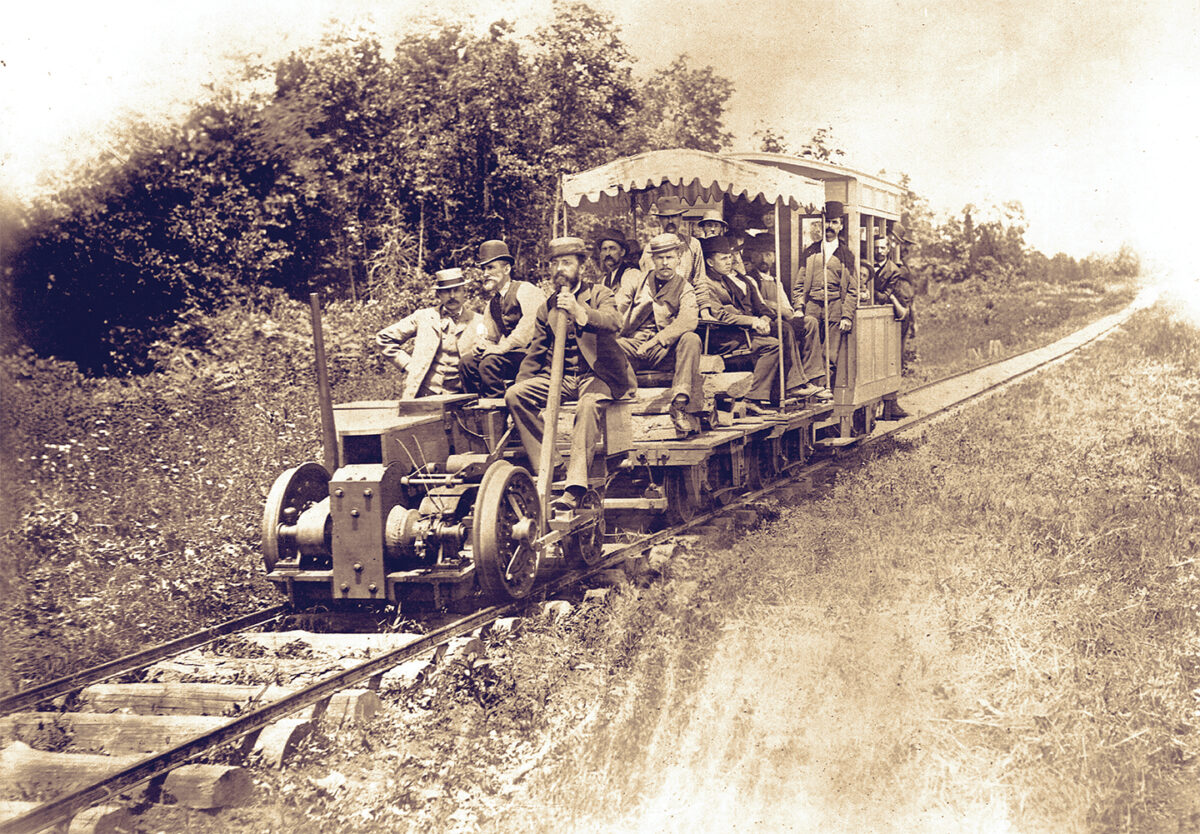On January 8, 1902, the morning rail commute into Manhattan took a tragic turn. In one of many tunnels beneath Park Avenue, a New York Central locomotive bound for Grand Central Station rammed the rear of a commuter train waiting to enter the terminal. The steam engine plowed through the parked train’s last two cars, killing 17 on impact and injuring three dozen, many of whom were scalded horribly by steam from the locomotive’s ruptured boiler. The wreck made national news in stories salted with grisly details.
A jury acquitted New York Central engineer John Wisker of manslaughter, ruling that there was no way Wisker could have seen the stop signal in the congested tunnel, obscured as the marker was by steam and smoke from heavy coal-fired locomotive traffic.
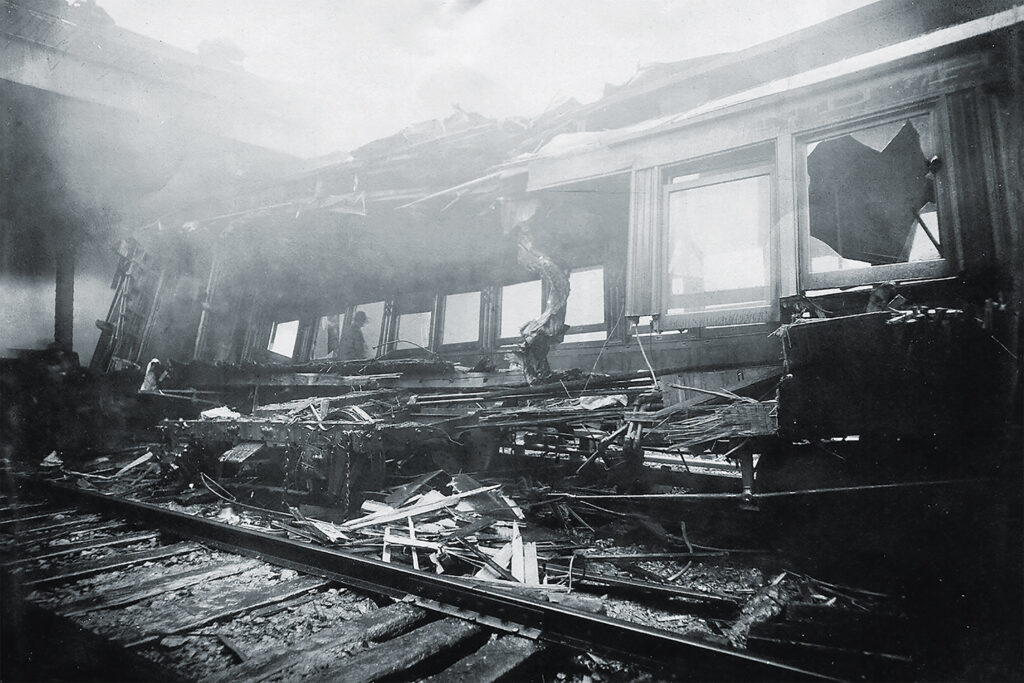
Authorities deemed the New York Central ultimately responsible for the accident because “during the past ten years said officials have been repeatedly warned by their locomotive engineers and other employes [sic] of the dangerous condition existing in said tunnel… and they have failed to remedy said conditions.” The next year the New York State Legislature passed a law prohibiting steam locomotive traffic on Manhattan Island after July 1, 1908.
Steam had powered locomotives since 1830, when the Baltimore & Ohio became the first common carrier railroad in the United States. But after 70 years and 193,000 miles of track, steam locomotives were falling behind the times—a burgeoning nuisance and a hazard in the new century’s expanding cities.
Rail-borne steam and smoke obscured not only signage but skylines. Tunnels were darkly satanic. Locomotives, loud and dirty, often required switching that knotted up train movement. Steam trains’ immense water tanks and Brobdingnagian maintenance infrastructure gobbled real estate in areas where space was at a premium. America, on the verge of becoming a global manufacturer, needed locomotives to run on something more dynamic and forward-looking than water brought to a boil under pressure. America’s railroads needed electricity.
As long as there had been railroads, engineers and inventors had been experimenting with electricity to power them. Electric motors, generators, and power grids delivered mixed results, and advances in electrifying railroads came slow. The first big leap came in 1880 when Thomas Edison ran the nation’s first generator-powered locomotive on a test track at his Menlo Park, N.J., laboratory.
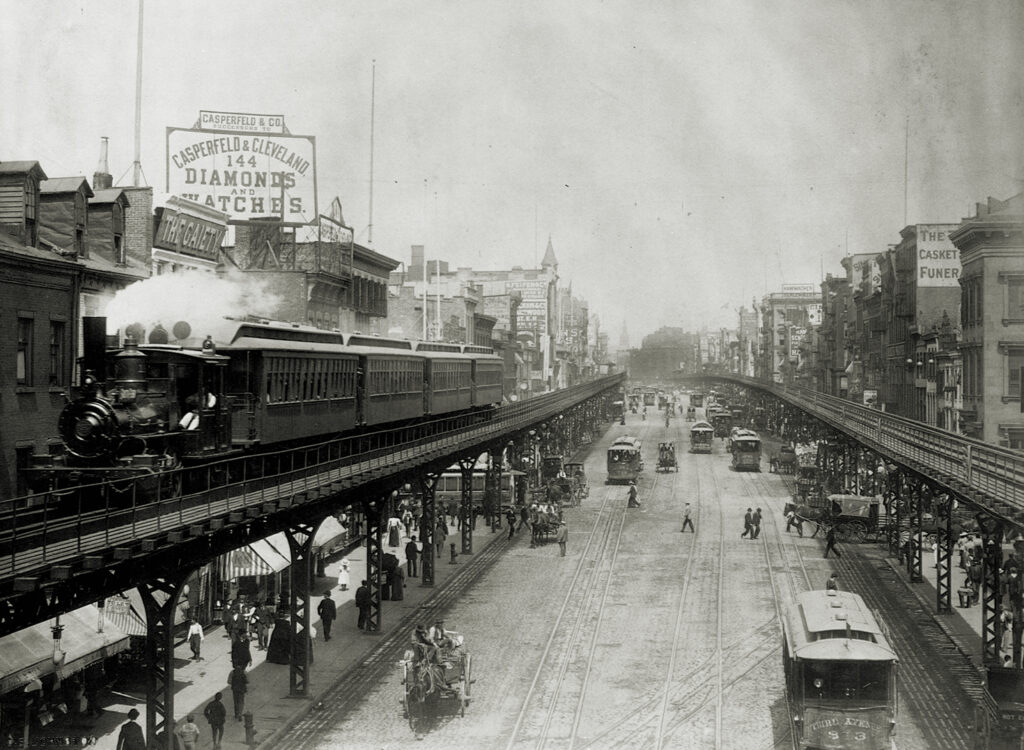
One young engineer drawn to the possibilities of electrified rail was Frank J. Sprague. A U.S. Naval Academy graduate with a sharp mind and a keen interest in electricity, Sprague was already developing an improved design of his own for an electric motor in 1883 when he went to work for Edison. Sprague had hoped to work with the famous inventor on electric motors for rail and other applications, but Edison had eyes only for his incandescent lighting system, which he believed would change life more fundamentally than would electric trains.
Sprague built power stations for Edison’s incandescent light system for a few months before resigning. With savings and a loan, he founded Sprague Electric Railway and Motor Company in 1884. He was not the first engineer to take on rail electrification. Other innovators, intent on outdoing horse-drawn trolleys, had tried to electrify streetcars, but the results were uncomfortable rides on unreliable machines. Sprague developed a self-regulating, constant speed motor that caused a sensation at the 1884 International Electrical Exhibition in Philadelphia. Observing Sprague’s unit in action, Edison remarked, “His is the only true motor.”
In 1887, the Richmond Union Passenger Railway of Virginia hired Sprague to build an electric
trolley system for that city. By summer 1888, Sprague’s operation was running 40 cars over
12 miles of track. Sprague’s system became the standard for electrified urban transport, inspiring other municipalities to follow suit. The benefits were evident and manifold. Compared to horses, electric trolleys were smoother, faster, easily handled—and manure-free. Within a decade some 900 electric streetcars were rolling on more than 12,000 miles of track in American cities. Horse-drawn trolleys passed into novelty.
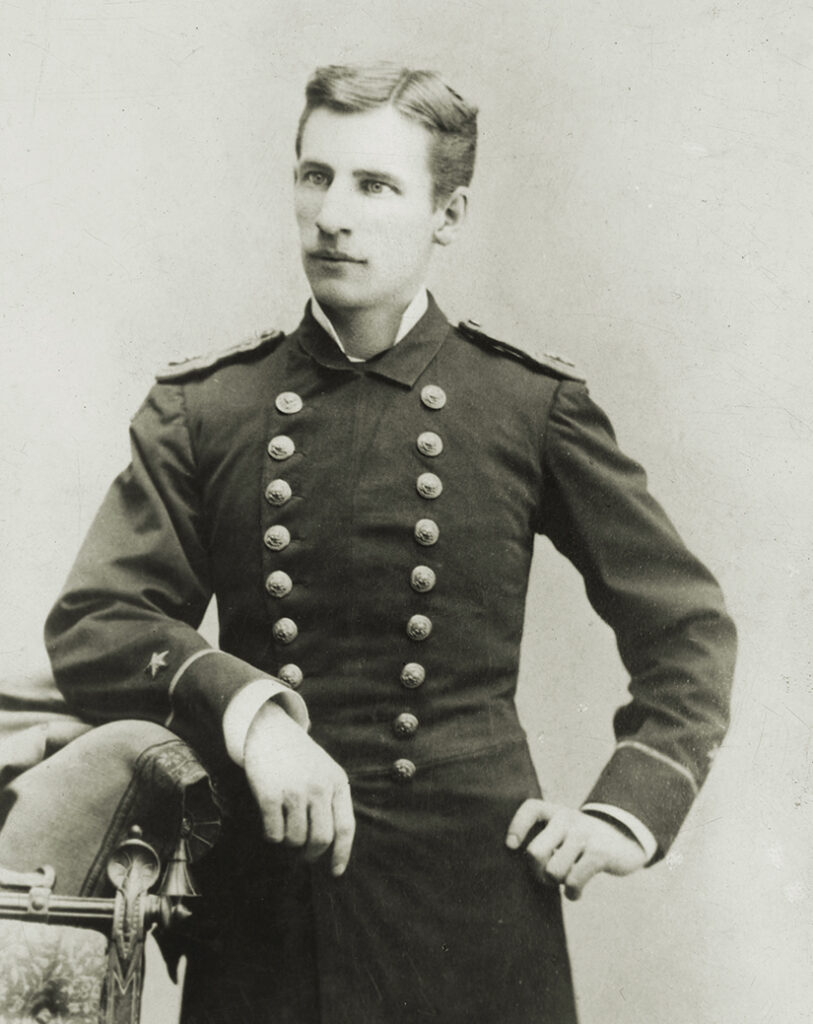
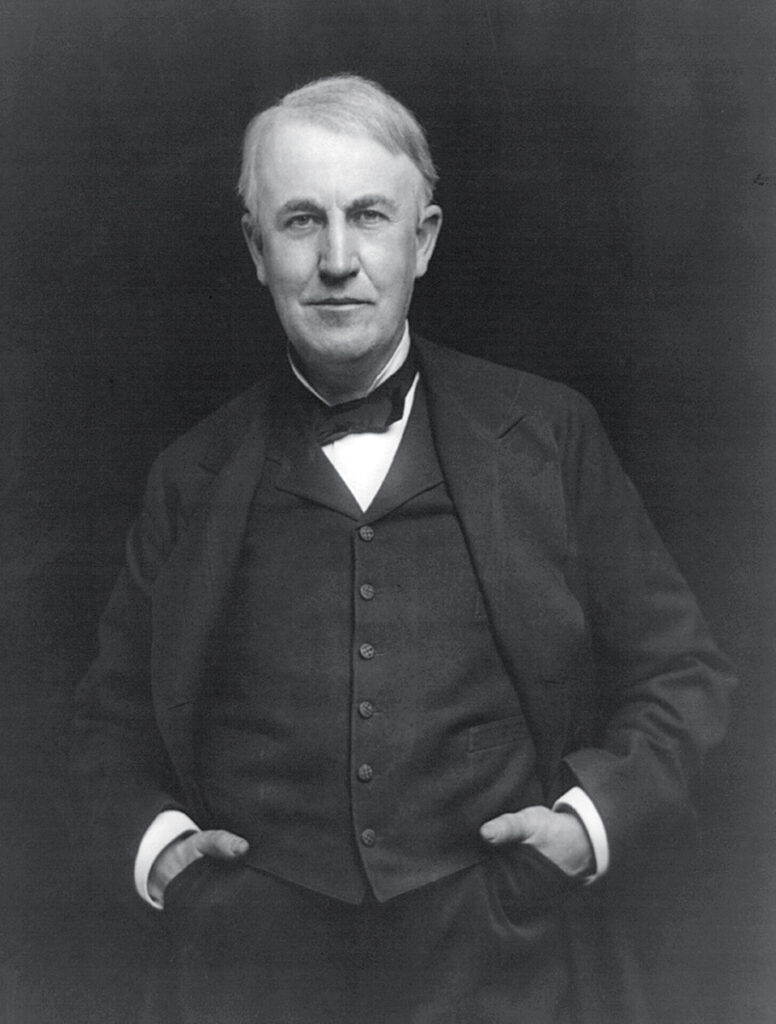
Rail electrification held great potential beyond streetcars and trolleys. Matched against a steam locomotive of comparable weight, an electric locomotive could produce more horsepower and exert more of the tractive force needed to pull a train. Electrics had fewer moving parts, reducing operational issues and maintenance needs, and were free of steam and smoke.
The first successful conversion of rail from steam to electric took place in 1893, when the Kentucky and Indiana Bridge Company electrified its Daisy Line, a five-mile light rail service that since 1886 had been shuttling commuters between New Albany, Ind., and Louisville, Ky. The conversion consisted of replacing steam locomotives with electric motor cars running on current transmitted by an overhead wire. The line ran 18 hours a day, and the smooth, clean 15-minute trip between cities proved immensely popular with passengers.
This and other early successes in electrification drew the attention of Charles P. Clark, president of the New York, New Haven & Hartford Railroad. Clark saw mainline and branch line electric service as an attractive alternative to steam. The New Haven’s many branch lines served one of the country’s fastest growing regions, including Massachusetts, Rhode Island, Connecticut, and New York City and environs. But by the 1890s the railroad’s almost exclusive focus on passengers over freight left it vulnerable to the rise of electric streetcars. Trolleys running parallel to New Haven branch lines peeled off passengers by offering uninterrupted, precise schedules that the railroad’s steam locomotives could not match owing to inadequate accelerating power and inability to run continuously.
Aiming to squelch trolley competition and retrieve passengers, the New Haven converted several lines. The first was a seven-mile stretch linking summer resort communities on Boston’s South Shore. The Nantasket Beach line, which opened on June 28, 1895, featured an electric motor car capable of pulling two 96-passenger trailers. The New Haven built a dedicated steam-driven power plant to generate electricity for the operation.
Within three years, New Haven traffic had doubled. Electricity was to “be promptly adopted by the company at other points on its lines,” Clark declared. The railroad made good on that promise, electrifying another 105 miles of track in Connecticut, Rhode Island, and Massachusetts between 1896 and 1907.
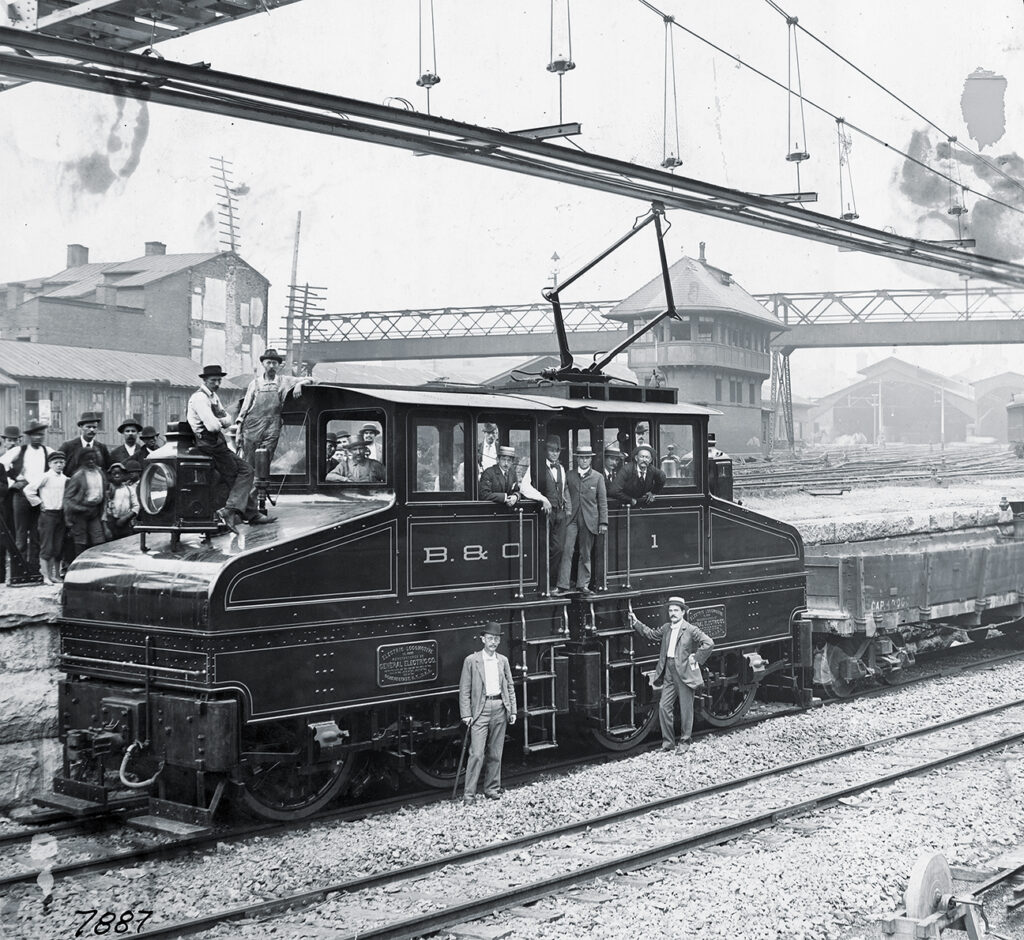
Two days after the Nantasket Branch conversion sparked to life in 1895, the first mainline electric railroad passed beneath Baltimore’s streets. The Baltimore & Ohio Railroad’s Belt Line rail extension, which began construction in 1889, was originally designed to be a steam-powered cure to a transport bottleneck in the Maryland port. This 7.2-mile line included a 1.4-mile double-track tunnel under Howard Street, and that’s where the B&O ran into problems. The city prohibited venting steam and smoke from the tunnel into the air. B&O decided to electrify, and in 1893 hired a new company, General Electric, to wire the Howard Street Tunnel.
Aided by financier J.P. Morgan, GE had coalesced the year before as a conglomeration of smaller companies. These included Edison’s several electric enterprises and his recent acquisition, Sprague Electric Railway and Motor Company. The new concern quickly marked itself as an innovator by building a 30-ton electric locomotive, its motor three times larger than any in existence, capable of 30 mph. At the World’s Columbian Exposition in Chicago in 1893, GE billed the behemoth as “the first practically operational high speed electric locomotive in the world adapted to the requirements of the steam railroad.”
The firm designed and built a locomotive for B&O powerful enough to muscle a 500-ton passenger train at 35 miles per hour or a 1,200-ton, 30-car freight train at 15 miles per hour up a 0.8 percent grade. To run the beast, GE also built a steam-driven power plant. The Belt Line was a local sensation when it debuted on July 1, 1895.
General Electric’s lunge at electric dominance drew a challenge from George Westinghouse, inventor of the railroad airbrake and founder of Westinghouse Electric and Manufacturing Company. Eager to explore electrification, the Pennsylvania Railroad hired Westinghouse to convert its seven-mile Burlington to Mount Holly, N.J., branch line, which went into regular electric service on July 22, 1895.
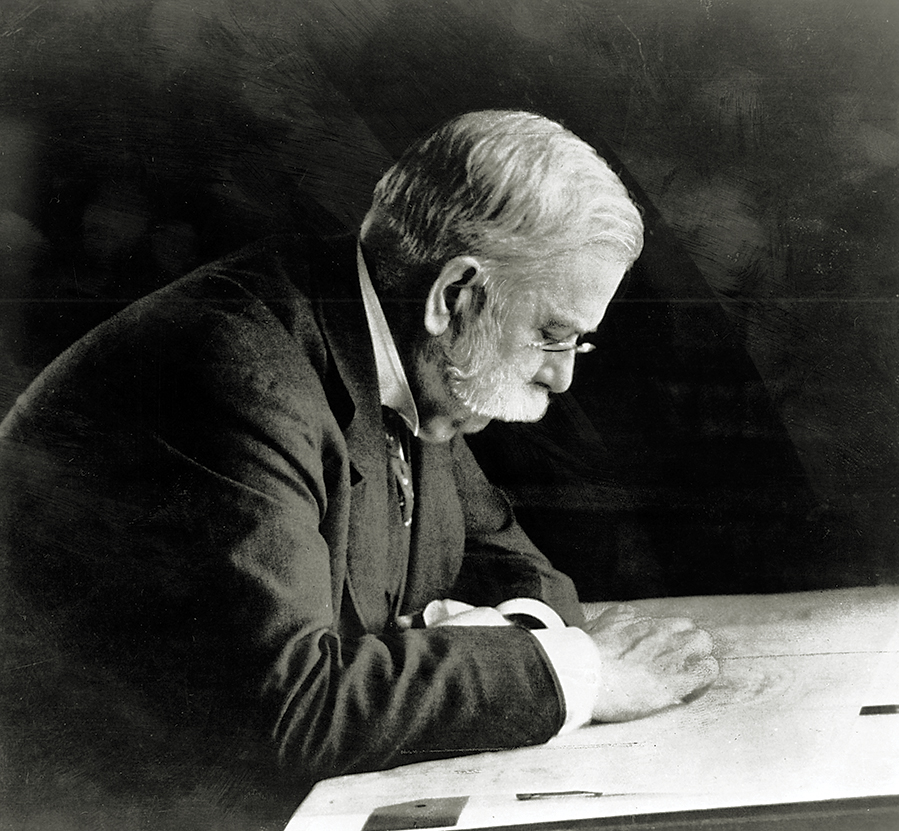
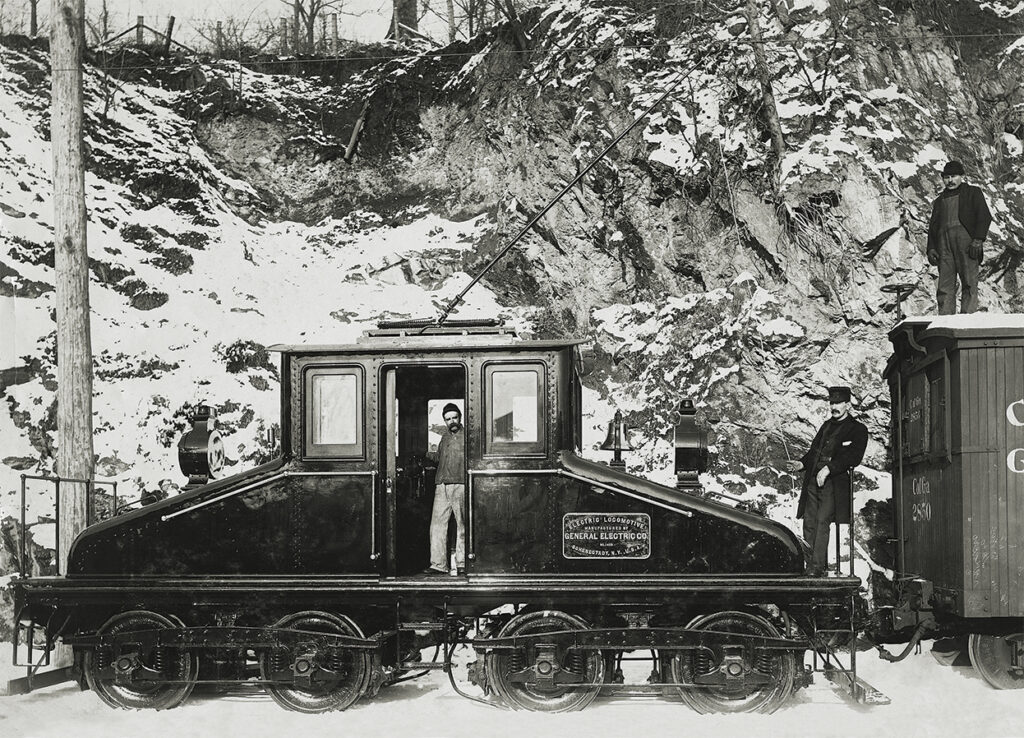
The near simultaneous debut of the mainline Belt Line and those Nantasket and New Jersey branch electrifications positioned electricity well as a motive power for railroads. But major issues prevented other railroads from doing likewise. Going from steam to electricity cost dearly, requiring the purchase of new locomotives and equipment to generate, transmit, and distribute power all down the line.
There was also the question of which system was better, alternating current or direct current. Westinghouse and Edison took sides, and the resulting War of the Currents reached far beyond rail electrification. Edison single-mindedly embraced direct current, and consequently GE favored DC for rail. DC motors and transmission and generation infrastructure were lightweight and easy to operate, suiting them to light rail and short-line railroad electrifications. But low-voltage DC systems were not suitable for heavy loads or great distances. They required large current flow, demanding heavy cables and multiple power substations along a line.
Westinghouse stood with alternating current because AC addressed DC’s shortcomings. Transformers enabled users to step AC voltage up or down from generation to distribution, providing transmission efficiency that DC could not match and suitable for heavier loads over longer distances. In the early 1890s the Westinghouse Company perfected the rotary converter, enabling the transfer of power from a high-voltage AC power supply to a low-voltage DC electric motor. Around that time GE independently built a rotary converter, one of many technology overlaps between the rival innovators. In 1896, Westinghouse and GE entered into a patent pooling and cross-licensing agreement, clearing the way for broad use of rotary converters and other equipment and technologies and making long distance electrification a practical reality.
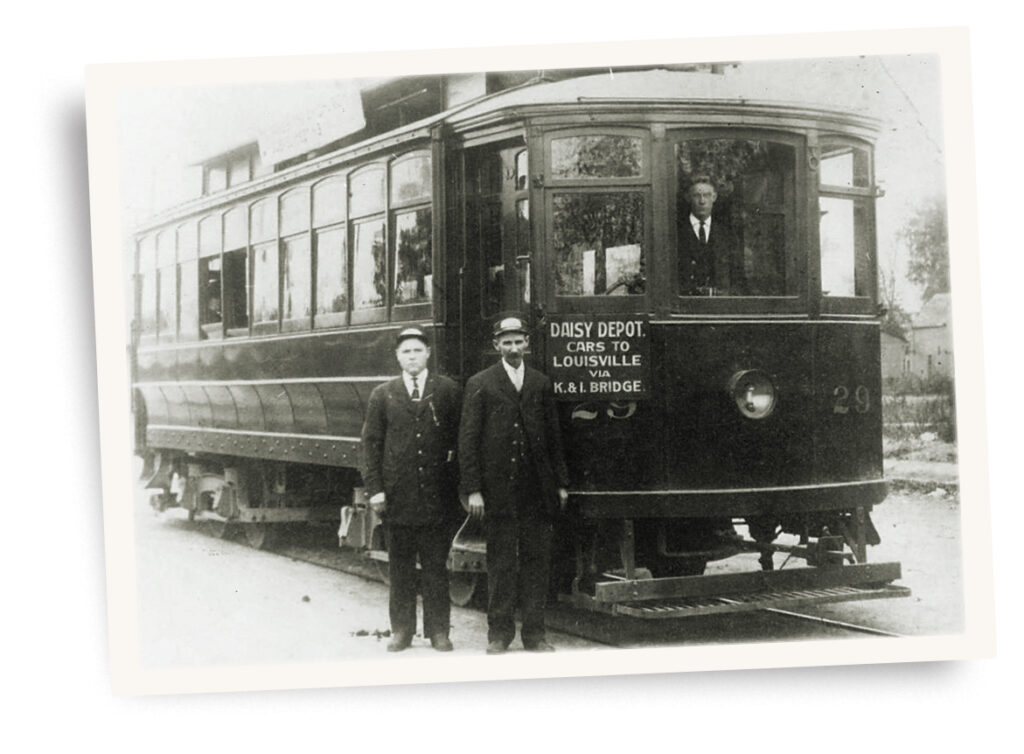
Generator capacity, transmission lines, motors, and other electric railroad equipment got better as well. In 1897, Sprague, who continued to innovate even after GE bought his company, developed a multiple-unit control system enabling an engineer to manage the controls of any car on a train from one location. Multiple-unit control enabled power to be evenly distributed throughout a train, improving tractive ability. These developments laid the foundation for conversion from steam to electric motive power across the rail network. The 1902 Park Avenue accident and New York’s ban on steam locomotives in Manhattan sparked the nation’s railroads into action.
The New York Central was the first to move, bringing the sprawling Grand Central rail hub into the modern era. Hemmed in on all sides by some of the world’s most expensive real estate, Grand Central had no room to grow and thereby accommodate rising rail traffic. Electrifying the terminal not only solved the pollution problem but created elbow room by eliminating steam-related infrastructure. Now Grand Central could add trackage with multi-level underground rail tunnels and platforms.
The new Grand Central Station opened for business on February 3, 1913. Electricity supplied by two new GE-built power plants powered a terminal that contained 31 upper-level tracks for long-distance trains and 17 lower-level tracks for suburban traffic.
The New Haven Railroad began a significant extension of its electric network, converting a 33-mile stretch from Grand Central to Stamford, Conn., featuring some of the nation’s heaviest passenger rail traffic. Westinghouse, partnering with Pennsylvania’s Baldwin Locomotive Works, provided locomotives, a dedicated power plant, and the first-ever AC power infrastructure. The first electric trains ran in 1907, with electrification later stretching to several branch lines through southern and central Connecticut and downstate New York. By 1915, the New Haven had doubled its commuter traffic in and out of Grand Central.
The Pennsylvania Railroad’s entry into electrification signaled a major boost in growth of mainline and branch line electric rail. At the turn of the 20th century, the Pennsylvania was one of the nation’s largest railroads, operating over 10,000 miles of track throughout the Northeast as far west as Illinois. Fortune magazine called the railroad “a nation unto itself.” But the Pennsy had no rail access to the thriving New York metropolitan area.
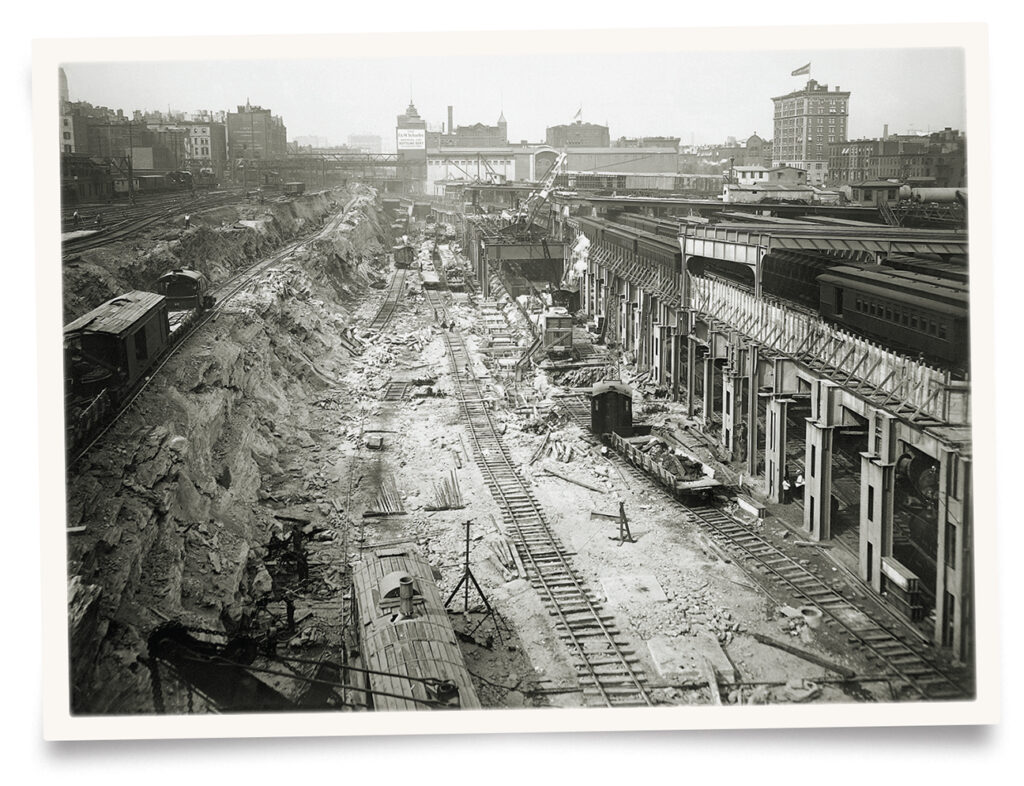
To compete with the New York Central, the New Haven, and other rivals, the big company developed a bold strategy. In 1900, the Pennsy purchased the Long Island Railroad, an extensive steam-powered network serving New York’s largest suburb but stopping short of Manhattan at the East River. The Pennsy faced a similar problem on Manhattan’s west side; all its east-bound traffic stopped in New Jersey at the Hudson. The Pennsy would bring these lines into Manhattan and erect a massive midtown terminal at which they would meet. And the whole operation would be electrified.
Work on the eight-acre Pennsylvania Station began in 1904, as did excavation of rail tunnels under the East and Hudson Rivers. Simultaneously, electrification of the LIRR began with a 38-mile stretch connecting Brooklyn, Queens, and Far Rockaway and opening in 1905. By 1913, the LIRR had electrified 188 miles of track. By 1920, passenger traffic had increased over 350 percent with more than 64 million passengers annually.
Pennsylvania Station opened on November 27, 1910, serving LIRR traffic and for the first time bringing eastbound Pennsy trains into Manhattan. The neoclassical terminal, designed by the architecture firm McKim, Mead and White, occupied two full city blocks and included a 30,000-square-foot waiting area with a 150-foot ceiling that made it the largest railroad station in the world. The subterranean levels featured 16 miles of track.
A dedicated power station in Long Island City managed both the LIRR and the Penn Station terminal—one of the last times a railroad built a dedicated power plant to serve its electric needs. Public utilities had grown in number and sophistication and could satisfy electric rail’s heavy power needs. Railroads also saved money on electrical infrastructure and maintenance by contracting their electricity needs to the power companies.
Growth in passenger service in large part drove rail electrification in the Northeast. The area around New York, Boston, Philadelphia, and Washington, D.C., was the country’s most densely populated region, a steady source of high demand for efficient, modern transportation. But electrification’s uses went beyond shuttling passengers among eastern metropolises, and innovation was not confined to one region.
Electrification projects in the early 1920s in the Appalachians demonstrated electric rail’s freight hauling capabilities. The Norfolk and Western Railway and the Virginian Railway ranked among the nation’s largest coal haulers, taking coal from mines as far as eastern Kentucky directly to ports in Norfolk, Va. These rivals both turned to electricity to cut time and cost crossing the rugged Appalachian terrain.
Unlike passenger lines, freight haulers required power systems able to handle heavy tonnage when demand for coal surged. Advances in electrical engineering led to a system in which high voltage AC electricity was transmitted along the line to power a rugged motor capable of high-energy output.
The 208-track-mile Norfolk & Western electrification in West Virginia and the 229-track-mile Virginian line were completed in 1925, saving the railroads a fortune in time and expense. Electric locomotives pulled 50 percent greater tonnage in less time at a cost savings of 12.5 percent compared to steam.
The Chicago, Milwaukee & St. Paul Railroad obtained similarly satisfying results from its 1927 electrification of nearly 900 miles of track. Running from Harlowton, Mont., to Seattle, Wash., and known to all as the Milwaukee Road, this railway was a remarkably versatile system that carried eastern manufacturing, Midwestern agriculture, Northwestern logging, and transcontinental passenger traffic. After electrification, passenger trains ran more smoothly through high mountain passes and kept tighter schedules. Freight service carried double the tonnage of the steam era.
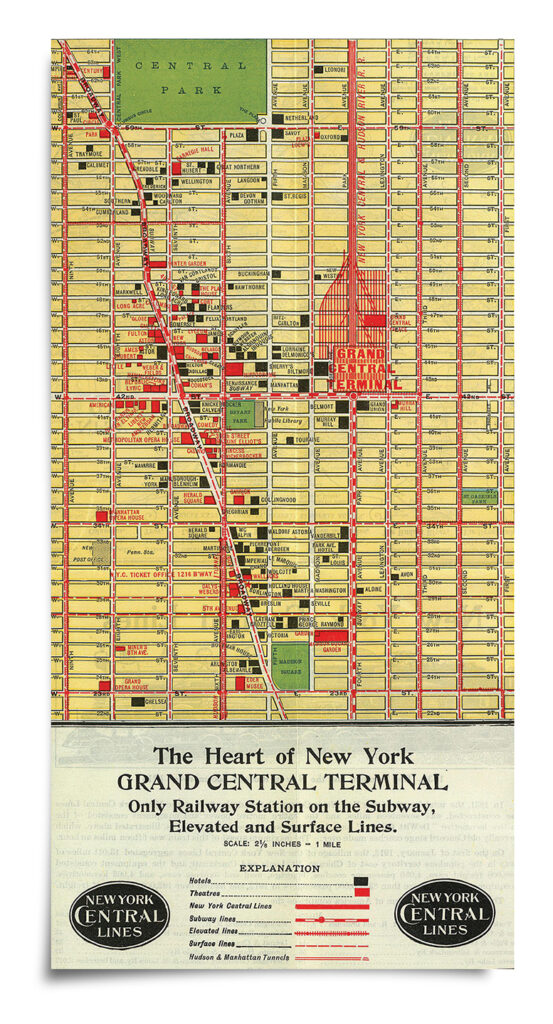
Back east, the Pennsylvania Railroad was running almost at capacity. By 1928, the Pennsy’s eastern lines were carrying the densest freight and passenger traffic in the country, and all data pointed to those numbers growing in years to come.
Understanding that more track alone could not forestall catastrophic service disruptions, Pennsy leadership announced a bold electrification program that eclipsed any such project undertaken to that point.
In the course of 10 years, the Pennsy electrified more than 2,000-track-miles to connect New York, Philadelphia, Baltimore, Washington, D.C., and many points between. At the project’s peak in 1934, amid the Great Depression, the electrification work engaged 12,000 men, with another 12,000 manufacturing 139 electric locomotives, equipment, and infrastructure.
The Pennsy electrification, completed in 1939, was a resounding success. In the next five years freight and passenger run times shrank, freight tonnage more than doubled, and passenger traffic quadrupled. The Pennsylvania Railroad’s electrified rail network became the nation’s largest and busiest, suggesting a bright future for electrification.
In 1939, the United States had approximately 6,300 track-miles of electrified rail, more than any other country and one-fifth of the world’s total. Though that number marked the peak of electrification in the country, it nonetheless represented only two percent of the nation’s rail network. World War II brought a halt to new electrifications. Assumptions and hopes that the return of peace would mark a rebirth of electrification quickly withered.
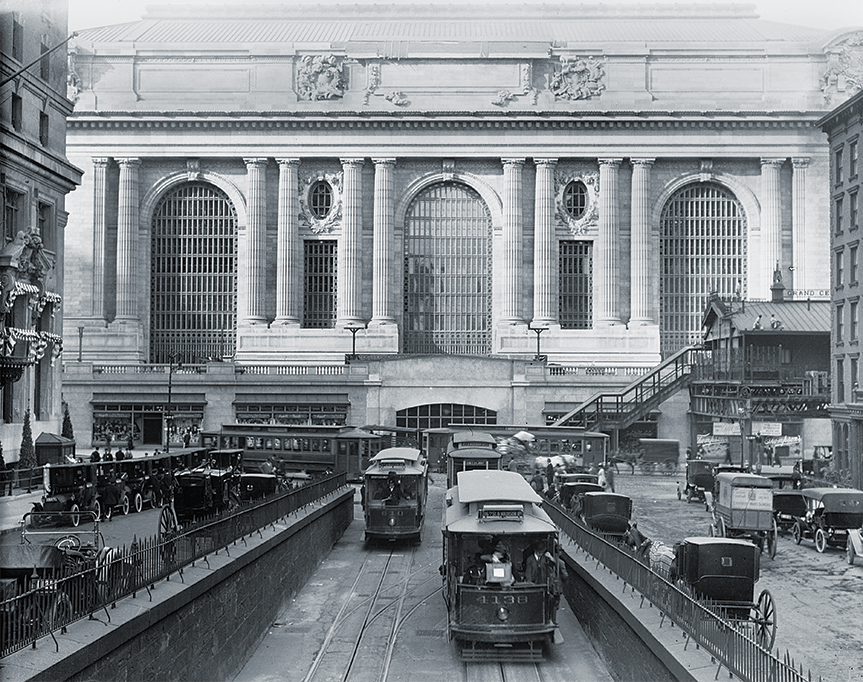
Starting in the late 1940s, rail companies lost revenue as freight and passenger traffic melted away with the industrial decline of the Northeast, construction of the interstate highway system, and the rise of commercial air transport. As railroad fortunes dwindled, so too did plans for post-war electrifications. By the 1970s, virtually every American rail company had gone out of business, merged with competitors, or been consolidated and taken over by the federal government.
Another hurdle to widespread electrification was the diesel-electric locomotive. First used in the early 1920s as railyard switcher engines to push train cars into position for locomotives, diesel-electrics used a diesel-powered engine to drive an alternator that produced electricity to run the locomotive, in effect a self-contained electric running off its own power plant instead of wires or third rails.
Diesel locomotives were not as efficient or environmentally friendly as pure electric locomotives but they provided a greater return on investment. Diesel fuel was cheap and the conversion from steam to diesel did not require an entirely new system with a dedicated power infrastructure the way electrification had. Many electrified lines were converted to diesel or made obsolete by railroad mergers or other forms of transport.
The dream of widespread rail electrification lives on. The United States has roughly 1,000 miles of electrified rail, mostly in the Northeast Corridor. Many cities and suburbs operate electric mass transit. The call for faster, cleaner, and more economical transportation is as strong as it was a century ago. The drive to dump fossil fuels in favor of cleaner technologies also invites the promise of electric rail’s resurgence. All that remains is the will to reinvest.
Richard Brownell is a frequent contributor to American History magazine. A passionate historical writer, he is fascinated by rail history.
This story appeared in the 2023 Summer issue of American History magazine.
historynet magazines
Our 9 best-selling history titles feature in-depth storytelling and iconic imagery to engage and inform on the people, the wars, and the events that shaped America and the world.


